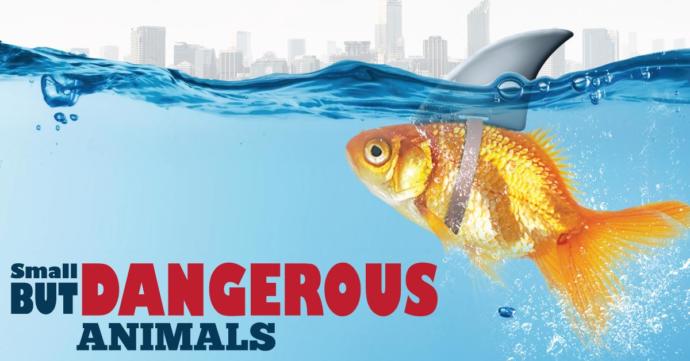
1 ) Golden Poison Dart Frog

The Golden Poison Dart Frog is 20 times more toxic than that of other dart frogs. The frogs' poison - Batrachotoxin, is found in glands beneath its skin, making them too toxic to touch.The poison can cause serious nausea, swelling, and muscular paralysis,and even death when it enters the bloodstream.An amount of poison equal to 2-3 grains of table salt is enough to cause the death of a human.
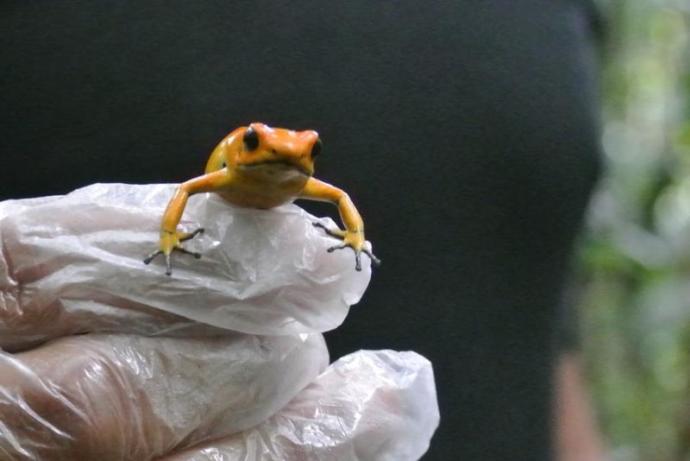
2) Slow Loris
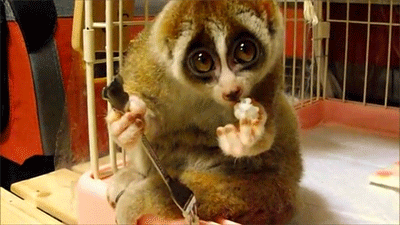
The Slow Loris is very cute and generally shy, but they have a toxic bite which is extremely venomous. Toxin is released from the brachial gland on the sides of its elbows. The Loris obtains its toxin by licking a gland on its arm, and the secretion is activated by mixing with its saliva.They smear this excretion on their young, to help keep them from being eaten in the wild. If they feel threatened or are provoked, they suck poison from their elbows into their mouths, injecting it into an enemy via a poisonous bite. The toxic can cause an allergic reaction,and if not treated immediately a person could be dead within hours . The toxin can cause death by anaphylactic shock in some people.
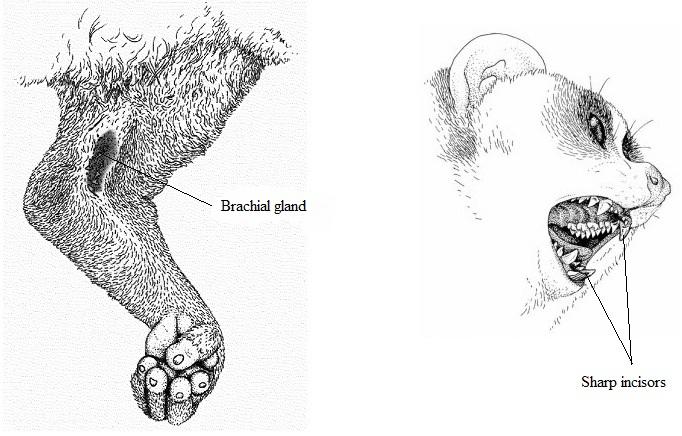
3) Blue Ringed Octopus

The Blue Ringed Octopus is only 4 inches in size. They are usually a brown or yellow color but, when frightened, the blue rings will light up all over its body. The venom -tetrodotoxin, is contained in their saliva,and when the octopus bites, it injects venom that paralyzes a person's muscles. The poison has no anti-venom , and depending on how much venom has been transferred into the wound it can kill a human within minutes. The onset of symptoms can be quite rapid. Soon there's no oxygen in the victim's blood and the heart shuts down. Within five to ten minutes of being bitten the victim begins to feel nauseous and starts vomiting. Visual disturbances occur as well as difficulty in speaking . This is followed by flaccid paralysis and respiratory failure. The victim's heart continues to beat until extreme asphyxia sets in.
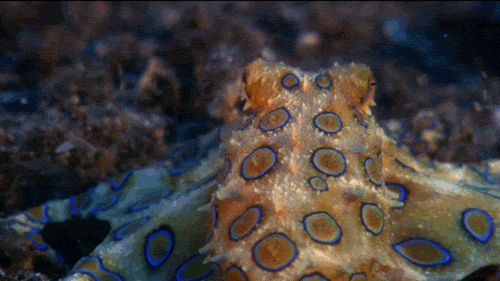
4) Stonefish
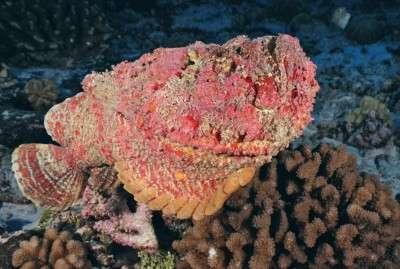
Stonefish have potent neurotoxins secreted from glands at the base of their needle-like dorsal fin spines which stick up when disturbed or threatened.They don't usually go out of their way to attack,but will use their poison as a defense mechanism if the feel threatened.The venom is usually released when pressure is applied to the stonefish’s spine.So if a person accidentally steps on one ,venom will be injected deep inside their foot. If left untreated ,the venom can cause heart failure and even death
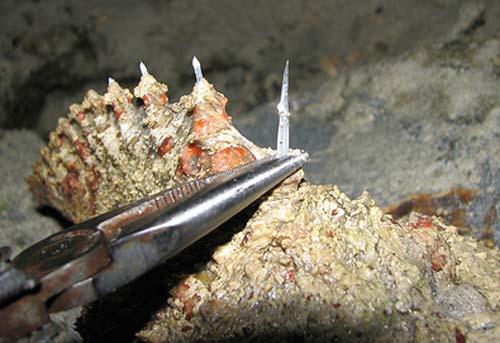
5) Gila Monster

Gila monsters use their venomous saliva for defense rather than hunting. The Gila clamps its mouth down and doesn't let go,it then chews into the flesh to make sure the venom is deposited into the broken skin of its victim. The toxin comes from the gland in its jaw, though grooves in its teeth ,but it produces only small amounts .The bite is extremely painful, but the pain is generally confined to the bite area,causing localized swelling. The toxin causes vomiting nausea,excessive sweating,weakness, faintness, chills, fever and high blood pressure. Currently, there is no antivenom for the Gila monsters bite
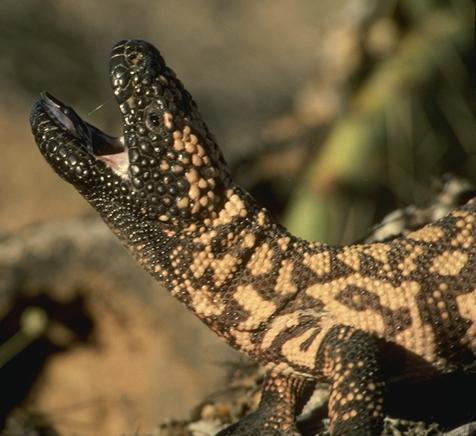
6 ) Irukandji Jellyfish

The Irukandji jellyfish is the smallest member of the box jellyfish family and measures only 5mm (0.2 ins) across and with tentacles less than 1 metre (3 ft) , but its venom is 100 times more powerful than a cobra's. Its sting is potentially lethal. Irukandji Jellyfish are unique as they have stingers on their bell and their tentacles , which are loaded with toxin. After being stung , the victim can develop Irukandji syndrome symptoms , which includes:vomiting;nausea;severe pain throughout the body; headache;profuse sweating;rapid heart rate and very high blood pressure. The increase in blood pressure can be life-threatening and cause heart failure. In some cases, the victim suffers pulmonary oedema. It can take up to 20 minutes to send the body into cardiac arrest. So a Irukandji jellyfishs sting can be fatal if the victim is not treated immediately 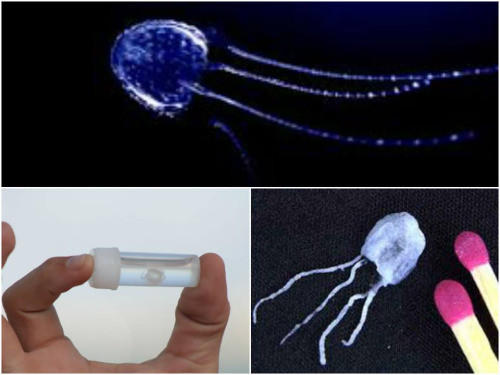
7) Lonomia Caterpillar

Lonomia caterpillars are highly venomous and are the most deadly of all caterpillars on earth. Their toxic venom causes disseminated intravascular coagulation and a consumptive coagulopathy, which can lead to a hemorrhagic syndrome.The toxin in the caterpillar's skin holds potent anti-clotting agents. This anti-clotting agent attaches to another protein to the body's cells and cause them to leak as blood is unable to clot. The toxin is stored in a sac at the base of each spine. The stems and needles penetrate the victim, venom flows through the hollow needles and into the puncture wound. After envenoming, inflammatory changes occur followed by systemic symptoms such as headache, fever, vomiting,rashes, severe pain, kidney failure and both in-vivo and in-vitro hemolysis.A severe bleeding disorder ensues. This internal bleeding spreads through the internal organs leading to ecchymosis, hematuria, pulmonary, and intracranial hemorrhages, which eventually leads to death.
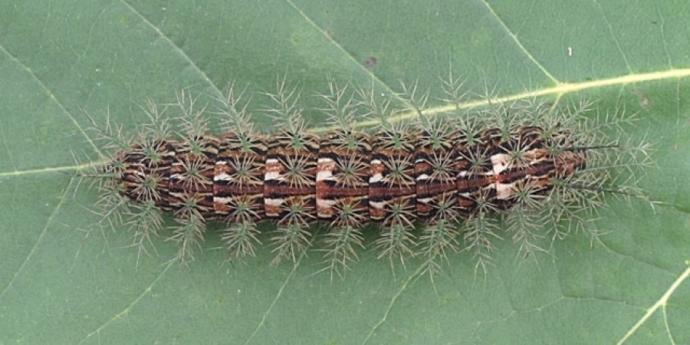
 Holidays
Holidays  Girl's Behavior
Girl's Behavior  Guy's Behavior
Guy's Behavior  Flirting
Flirting  Dating
Dating  Relationships
Relationships  Fashion & Beauty
Fashion & Beauty  Health & Fitness
Health & Fitness  Marriage & Weddings
Marriage & Weddings  Shopping & Gifts
Shopping & Gifts  Technology & Internet
Technology & Internet  Break Up & Divorce
Break Up & Divorce  Education & Career
Education & Career  Entertainment & Arts
Entertainment & Arts  Family & Friends
Family & Friends  Food & Beverage
Food & Beverage  Hobbies & Leisure
Hobbies & Leisure  Other
Other  Religion & Spirituality
Religion & Spirituality  Society & Politics
Society & Politics  Sports
Sports  Travel
Travel  Trending & News
Trending & News
Most Helpful Opinions